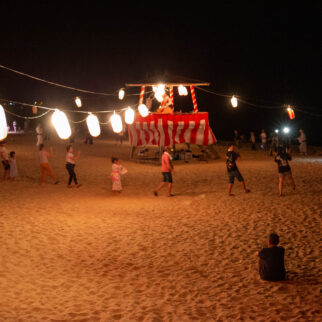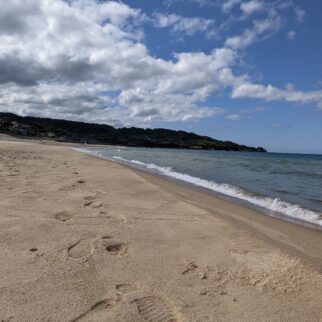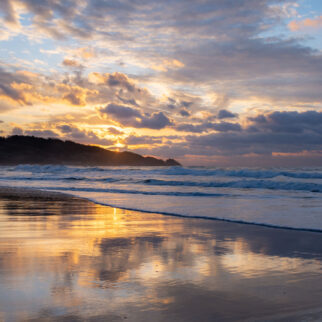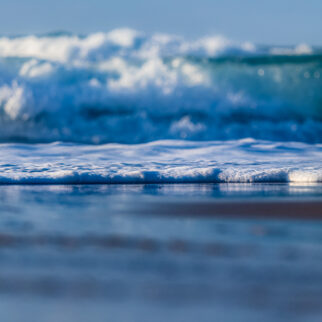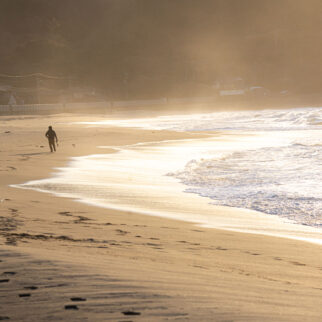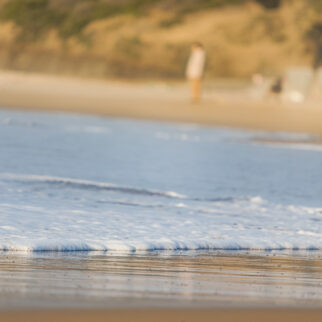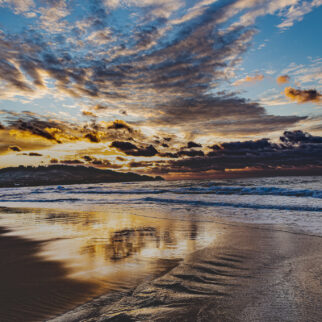 Iwami Ginzan Silver Mine site
Iwami Ginzan Silver Mine site
created by a volcano
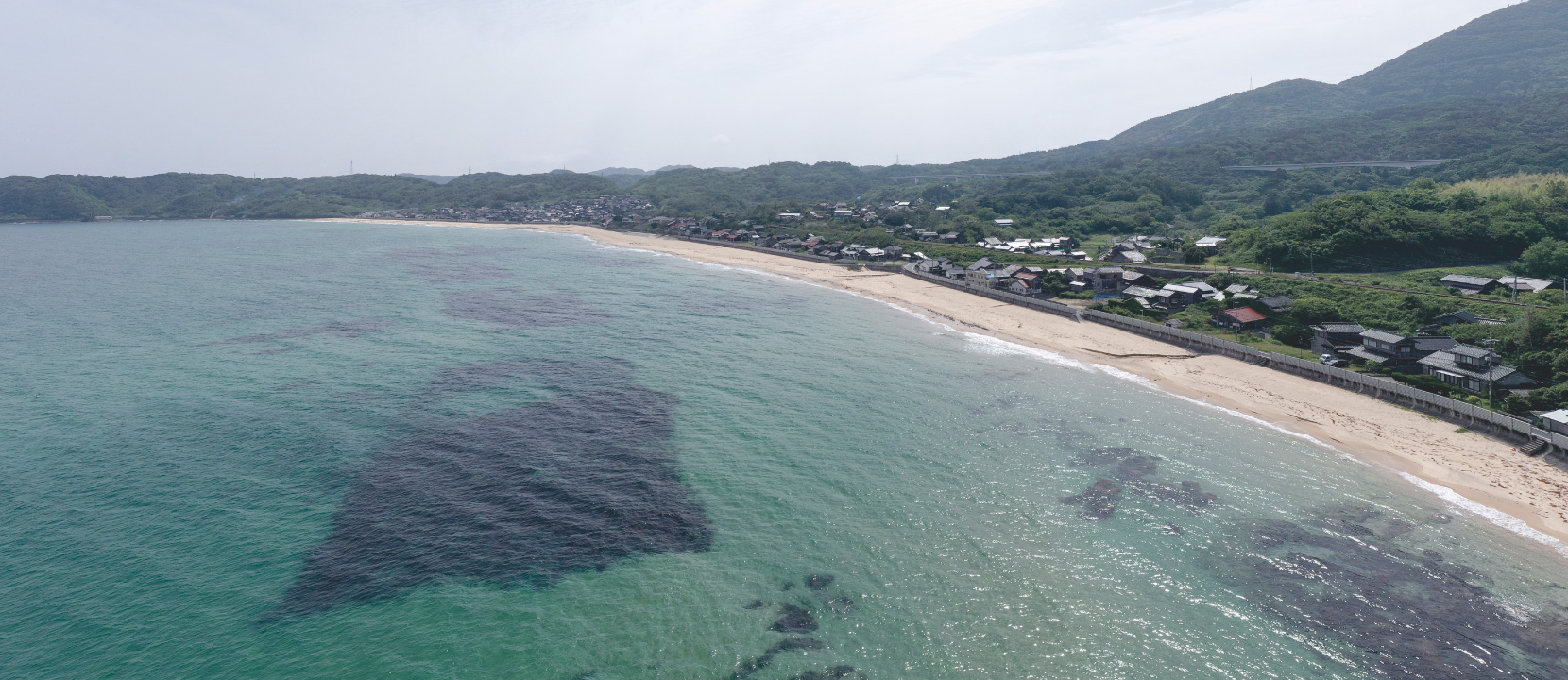
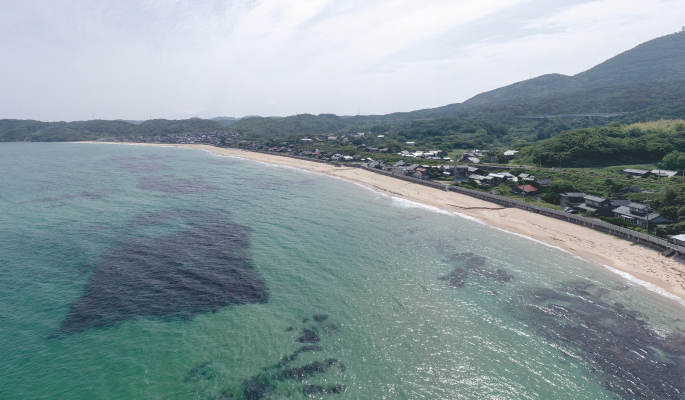
A beach of singing sand
Kotogahama Beach
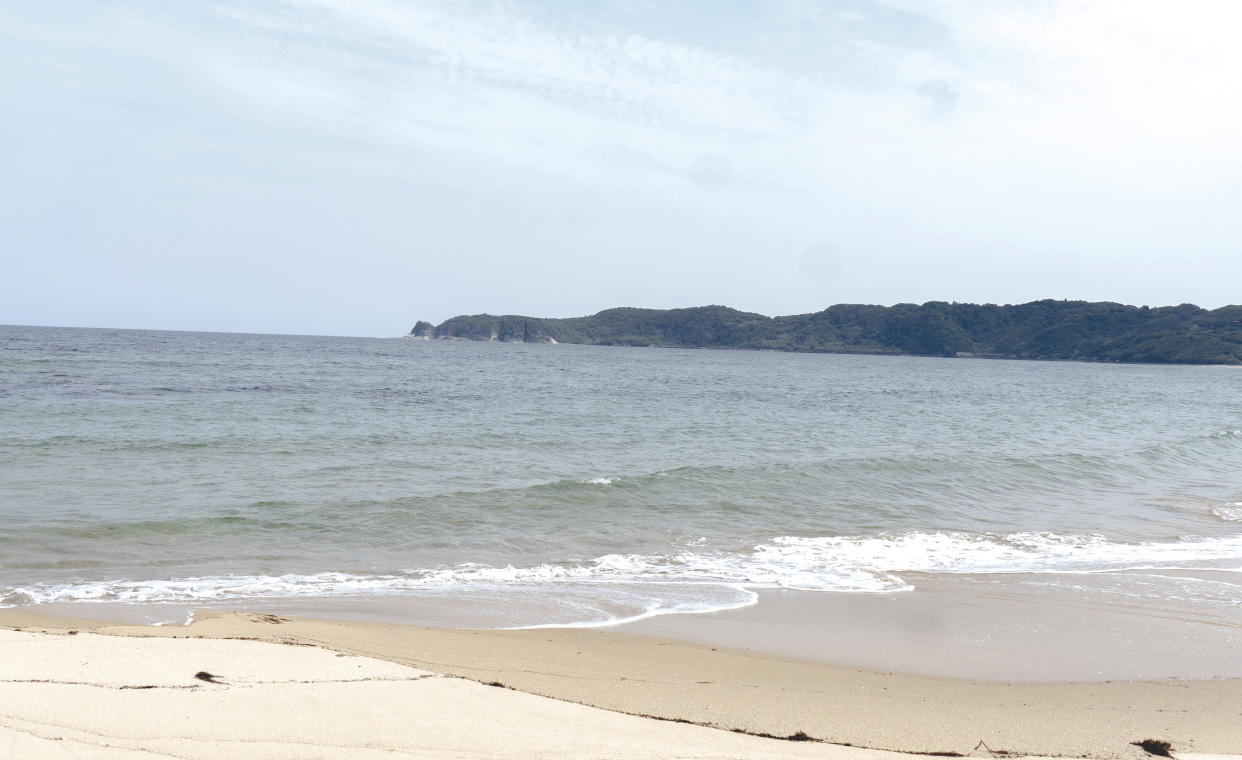
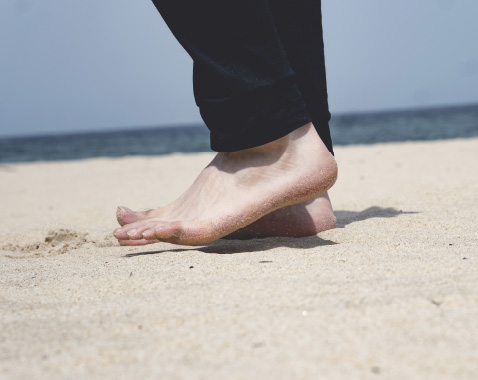
Kotogahama Beach is a 1.4 km stretch of white “singing sand” that makes a sound when you step on it. The sound is produced by the uniform grains of quartz sand rubbing against each other, but if the sand becomes dirty it will immediately stop producing the sound. So the singing sand is also proof that the beach is pristine. The beach is located in a semi-circular bay with two capes of green tuff bedrock protruding on either side. It is thought that this shape lessens the power of the waves, so that the sand is continually washed by the waves within the bay. Some say the bay itself may be a volcanic crater.
Behind the beach stand rows of houses in the Maji district. The beauty of the singing sand, which is said to be the best in Japan, has been preserved by the local residents who have cherished this beach that is so closely connected to their lives, such as in the holding of traditional Bon Odori dances.

- 1Quartz
- These beautiful crystals are minerals called quartz crystals. Quartz is found in many rocks and is strong and resistant to weathering, so sand that has been washed by waves over a long period of time contains a high proportion of quartz. At Kotogahama Beach, more than 70% of the sand is quartz.
- 2Bon Odori dance
- The Bon Odori dance procession of Maji district is held for three nights from August 13th to 15th until midnight. Designated as an intangible folk cultural property of Oda City, it features three types of songs and accompanying dances.







